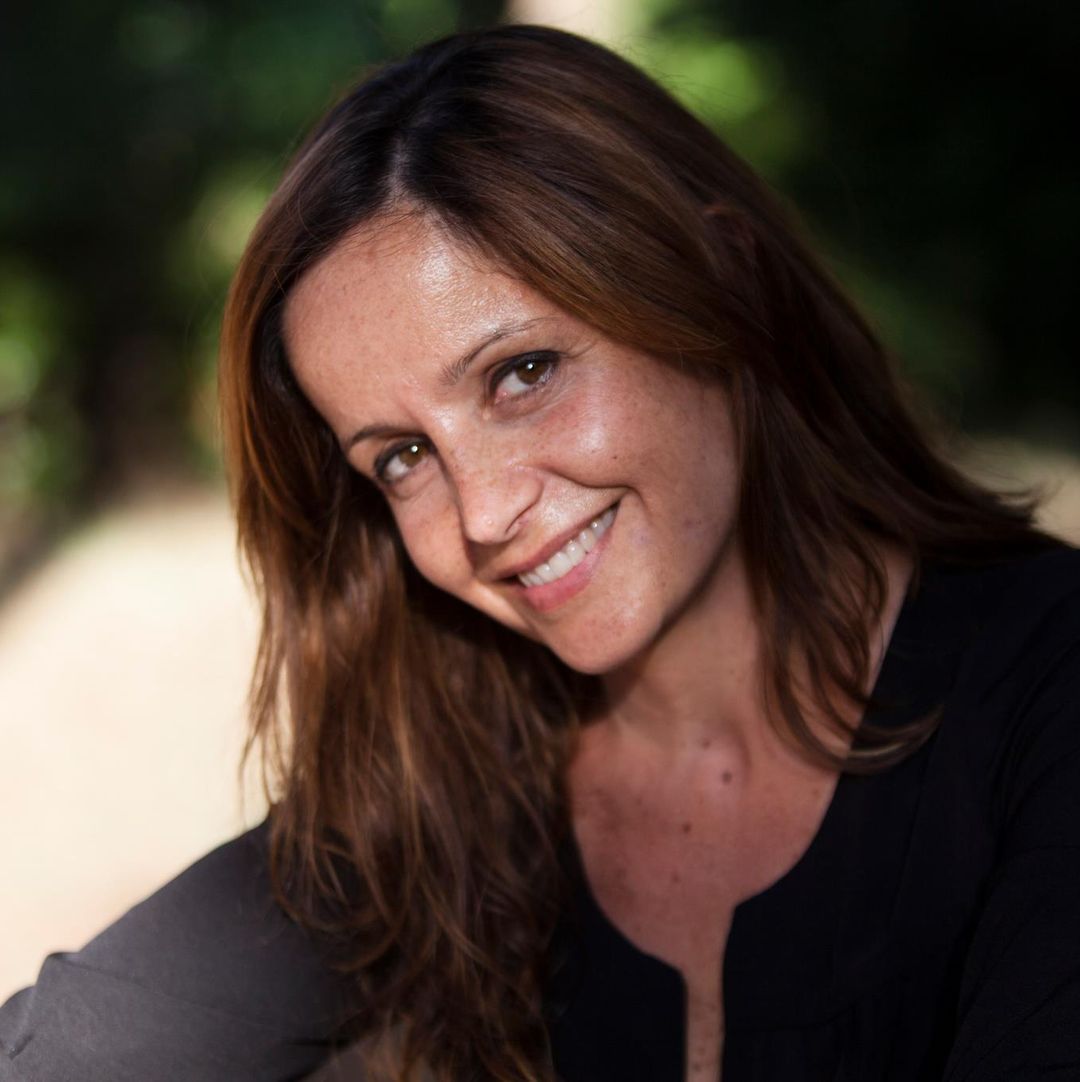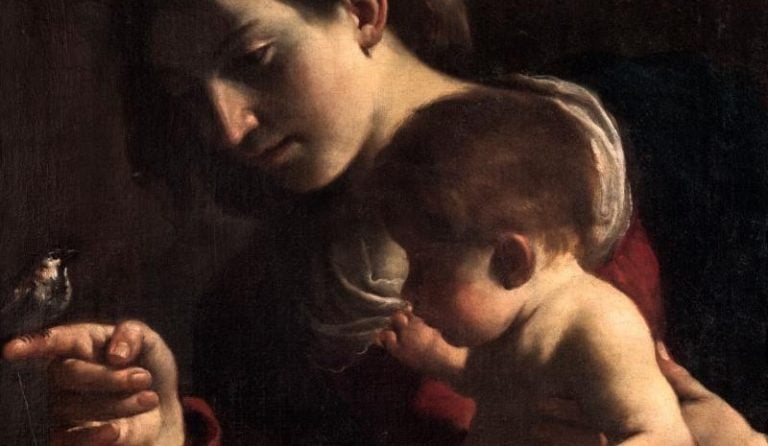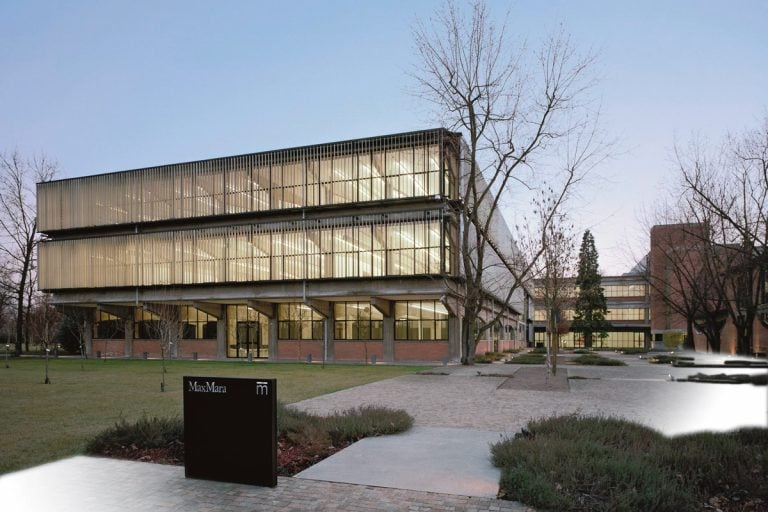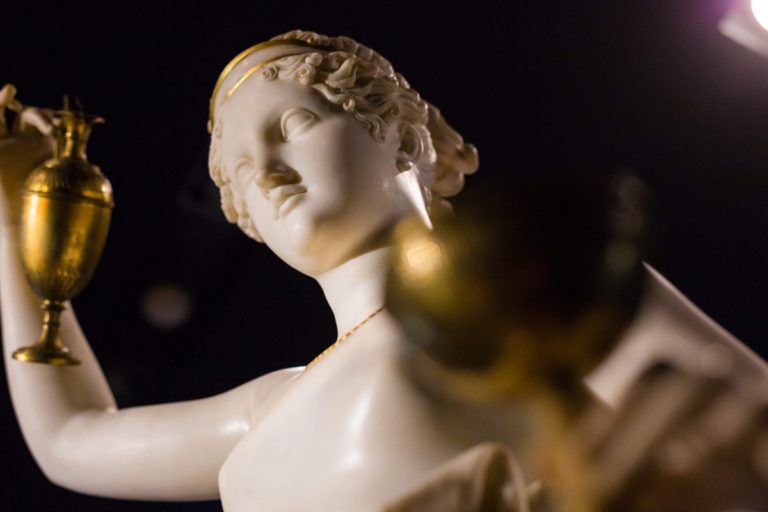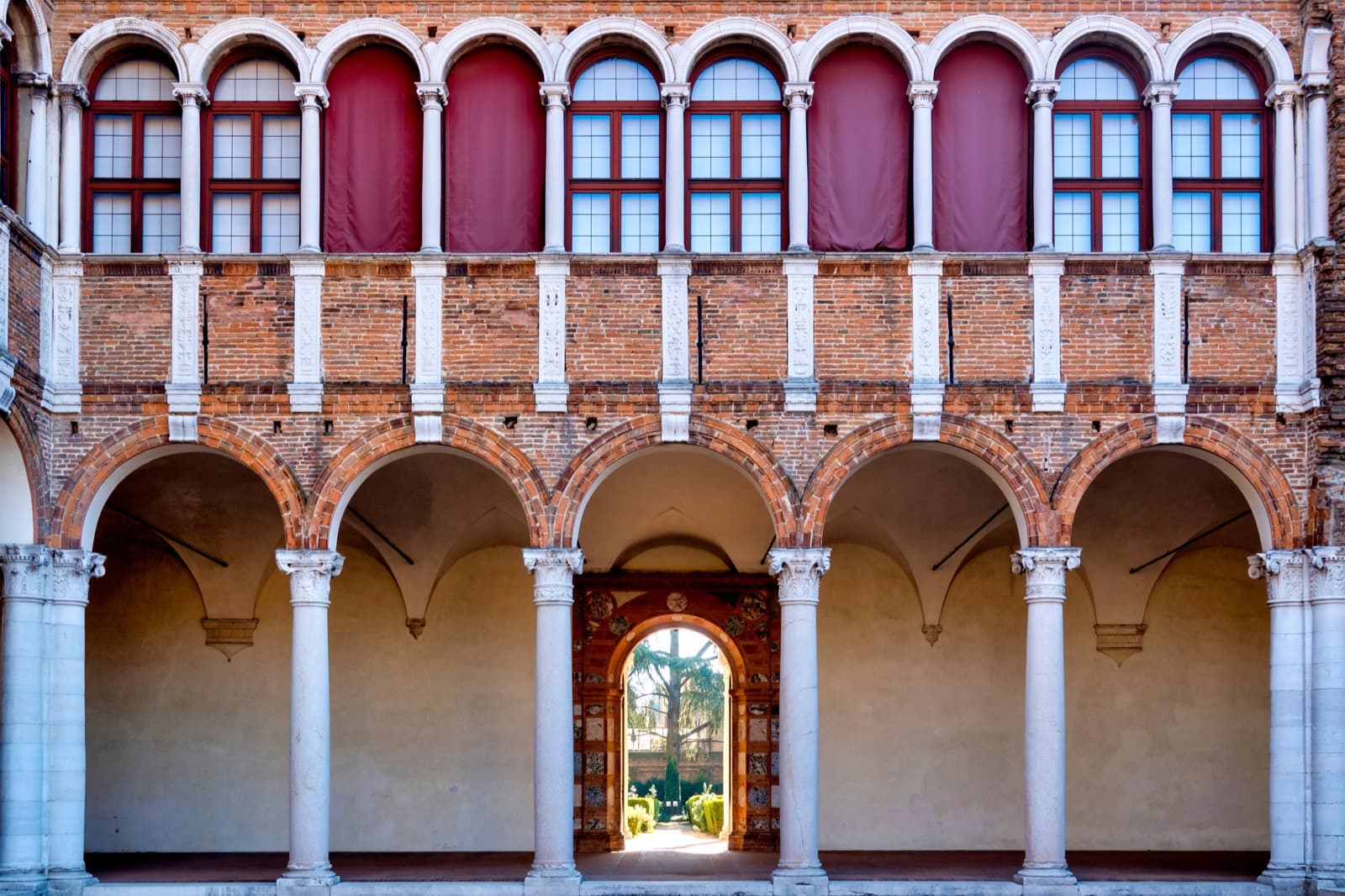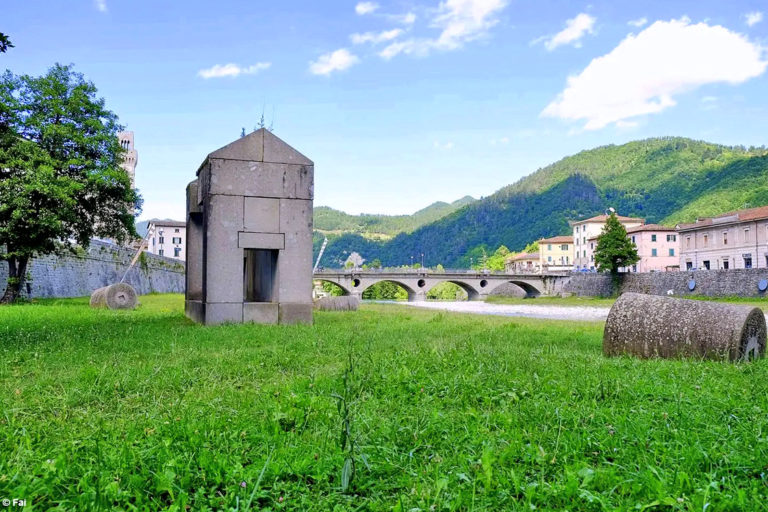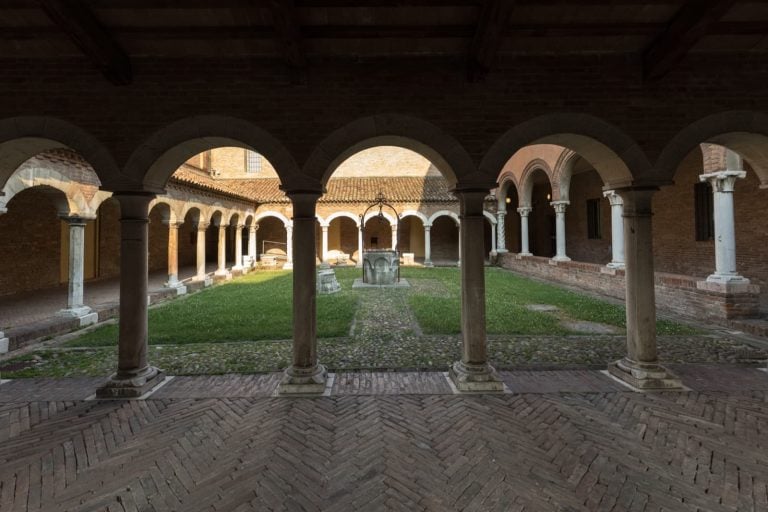They are housed in evocative places of great beauty – such as castles, avant-garde architecture, ancient palazzos and monuments of industrial archaeology restored to new life – and are the best part of Emilia-Romagna’s collection.
The collections of works of art, private but open to the public, scattered throughout the region are many and all worth a visit. The works on display mainly relate to the 20th century, but there are also ancient and contemporary works.
Mazzolini Collection | San Colombano Monastery, Bobbio (PC)
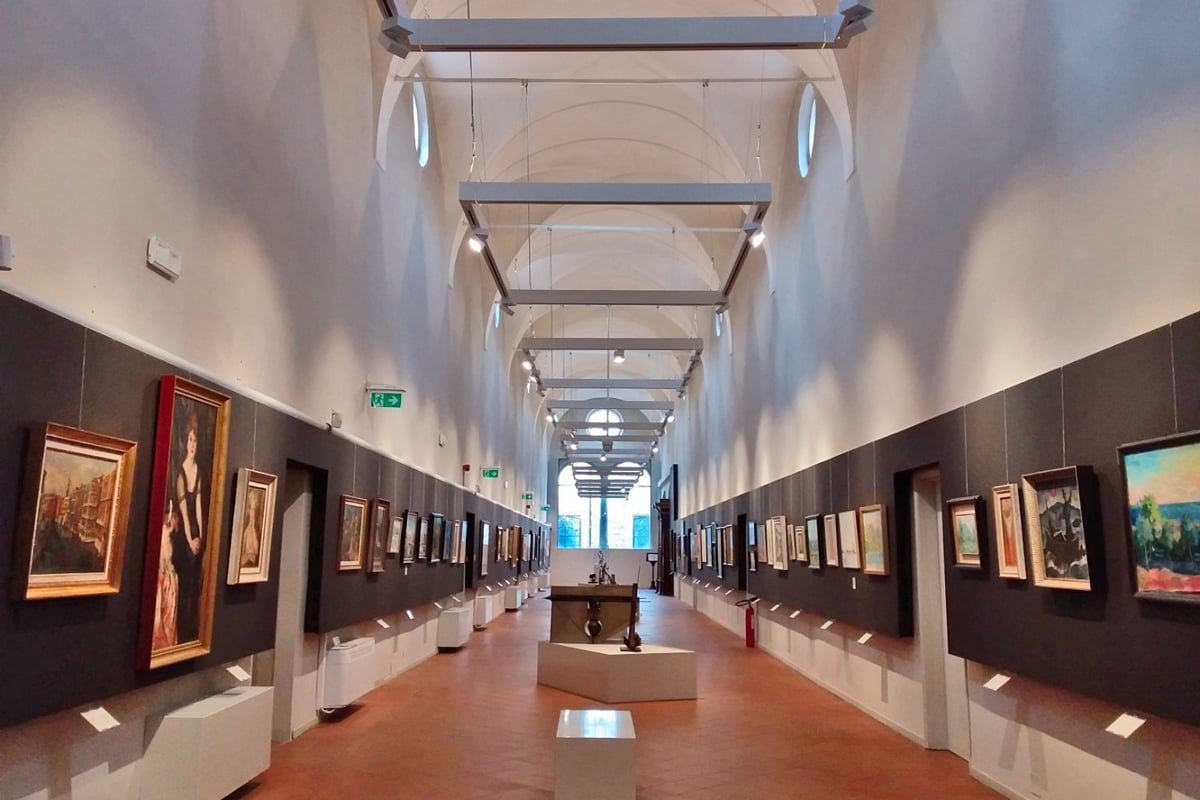
Since 2015, the monumental rooms of the Monastery of San Colombano in Bobbio have housed the Mazzolini Collection Museum.
Here you can admire 27 sculptures and 872 paintings by major Italian artists, from De Chirico to Carrà, from the post-Cubism of Massimo Campigli to Fontana and Manzoni, from organic and nuclear art to the informal sign art of Capogrossi.
MIM | San Pietro in Cerro Castle (PC)
Inside the 13th-century castle of San Pietro in Cerro is home to the MIM – Museum in Motion.
The museum space, specially restored, extends along the path between the two towers, in the ancient patrol walkway and the granary, and displays the interesting collection of Franco Spaggiari.
There are more than one thousand six hundred works by contemporary artists, such as Bonalumi, Crippa, Dova, and Plessi: a collection in constant motion, from the post-war period to the present day, with an overview ranging from the international scene to Piacenza.
CSAC | Valserena Abbey (PR)
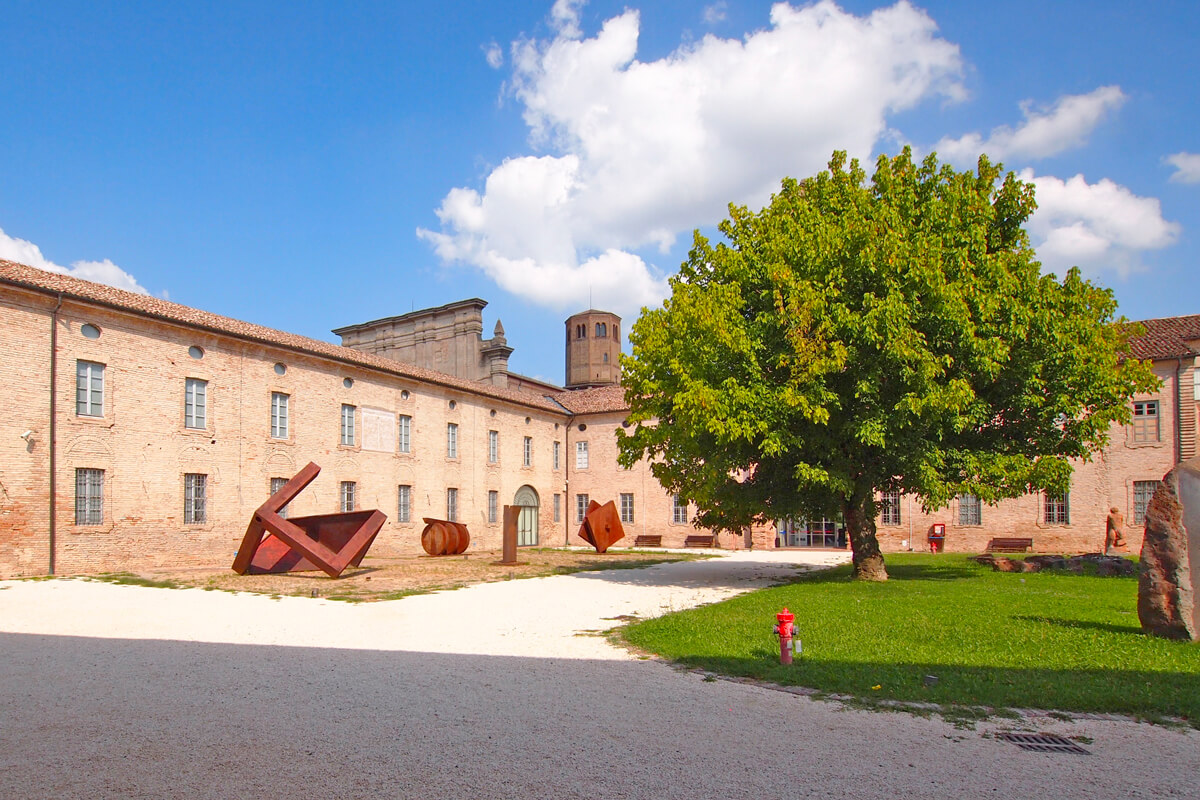
A few kilometres from Parma, in the Abbey of Valserena, an imposing 14th-century complex also known as the ‘Certosa di Paradigna’, is the headquarters of the Communication Study and Archive Centre (CSAC), founded in 1968 by the University of Parma.
Its five thematic sections – dedicated to Art, Photography, Media, Design, Entertainment – contain around 12 million items.
The Art section recounts, through more than 1,700 paintings, 300 sculptures and 17,000 drawings (as well as a substantial bibliography and documentation) the panorama of Italian art after the Second World War, from the realism of Renato Guttuso to the abstraction of Carla Accardi, from the informal art of Arnaldo Pomodoro to the Arte Povera of Mario Ceroli, passing through the conceptual approach of Alighiero Boetti.
Cervi Museum | Gattatico (RE)
The Cervi Museum in Gattatico, in the province of Reggio Emilia, houses not only the relics of the partisan Cervi family but also an interesting collection of works of art that testify to the civic commitment of many artists in the anti-fascist struggle.
It is divided into three sections, comprising more than two hundred works of painting, sculpture and graphic art, dating from the post-war period to the present day and focusing on the themes of the Italian Resistance and social struggle.
This collection is the result of decades of donations from local and national artists and includes works by Renato Guttuso, Renzo Grazzini, and Ernesto Treccani, among others.
Leonardi Archive | Modena
The Cesare Leonardi Archive, founded in 2010, is located in Modena and aims at preserving, disseminating and deepening the studies and projects of the architect.
The archive is housed in Leonardi’s home-studio, itself a place worth seeing for the originality of its architectural details, the first artisan village in Italy.
On thick yellow wooden shelves, handmade according to a strict modular criterion, are preserved architectural drawings, photographic compositions, wooden models, sculptures, furniture and prototypes of all kinds, which fill the space and coexist with objects linked to family life and origins, expressing an inseparable relationship between life and design.
It can be visited on certain opening days or by appointment via the website.
Raccolta Lercaro | Bologna
In Bologna, the Raccolta Lercaro, less known than others but equally valuable, is an incredible permanent collection that today includes works by Giacomo Manzù, Arturo Martini, Francesco Messina, Mimmo Paladino, Vittorio Tavernari, Giovanni Boldini, Georges Rouault, Ettore Spalletti and many others.
Among the paintings and graphics, works by Giacomo Balla, Filippo de Pisis, Renato Guttuso, Antonio Mancini, Giorgio Morandi, Adolfo Wildt dialogue with some precious antique works, including a plaster tondo of the Madonna del Latte (late 15th/early 16th century) and three Flemish tapestries (late 16th/early 17th century). The entrance is free.
Cirulli Foudation | San Lazzaro di Savena (BO)
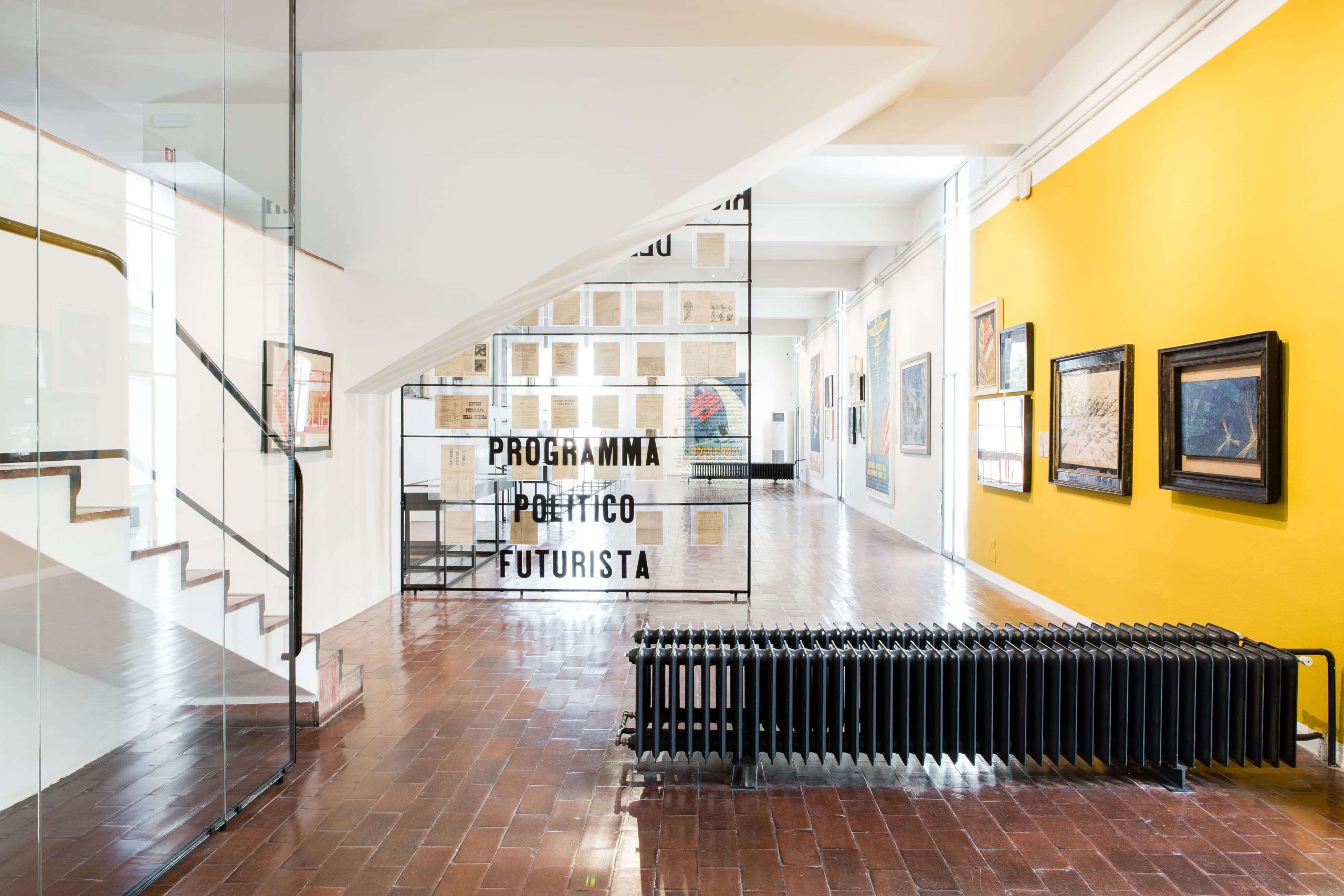
The Cirulli Foundation is located in San Lazzaro di Savena (BO) and is open by appointment. Founded in 1984 by the Bolognese collectors Massimo and Sonia Cirulli, it contains more than 200,000 works dedicated to the culture of 20th-century Italian art.
Paintings, sculptures, advertising graphics, photographs, collages and photocollages, drawings, books and magazines, and design objects tell the story of twentieth-century Italy through ten themes: architecture, industry, fashion and design, costume and society, propaganda, speed and flight, culture, sport, and leisure.
Giacomo Balla, Osvaldo Licini, Fortunato Depero, Mario Sironi, Lucio Fontana, Giò Ponti, and Bruno Munari, among others.
The building itself is worth a visit: the 2,000 square meter industrial building was designed by Achille and Piergiacomo Castiglioni for Dino Gavina, a Bolognese entrepreneur, designer and publisher, inspired by the agricultural buildings with barns that still dot the surrounding landscape.
Remo Brindisi House Museum | Lido di Spina (FE)
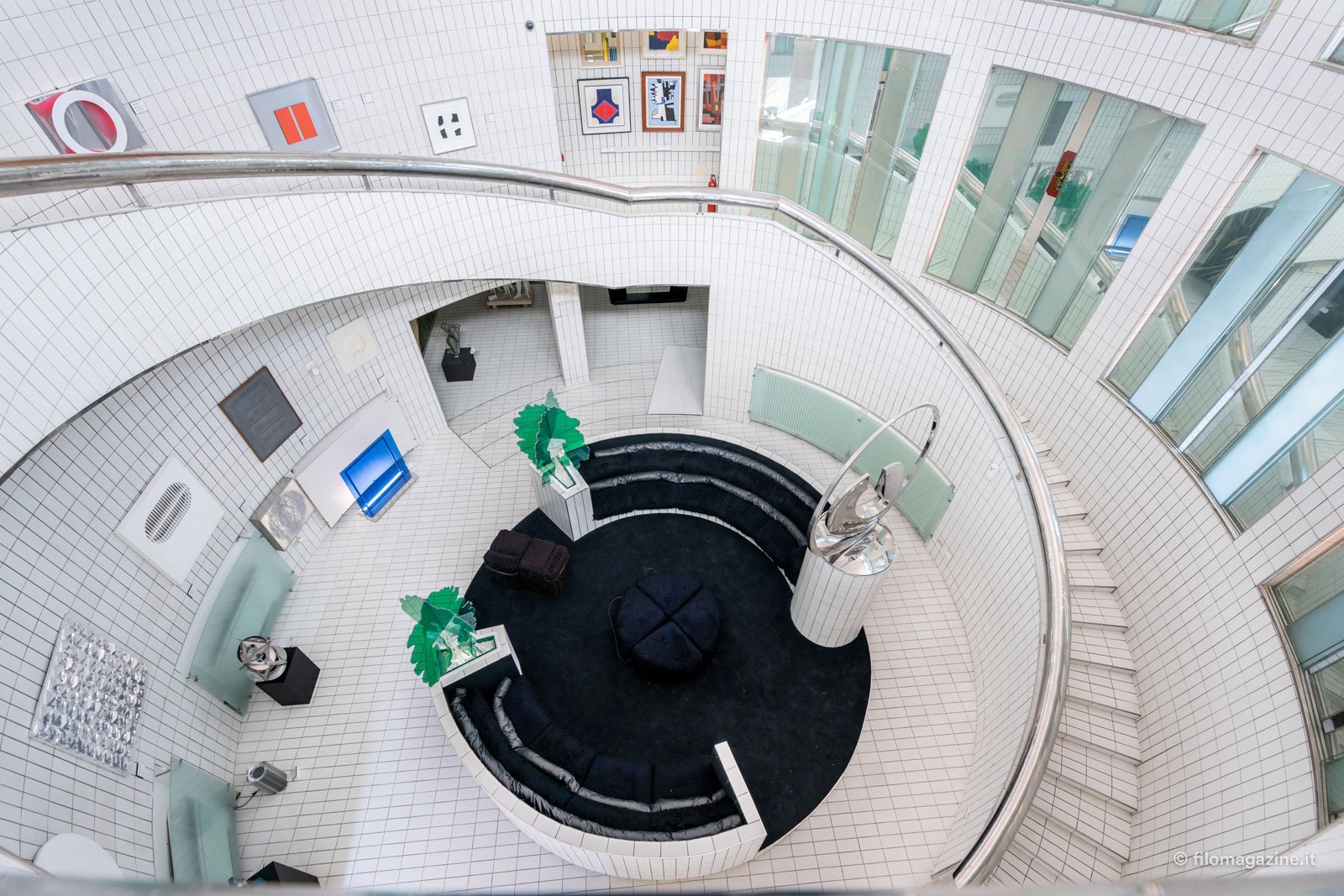
The Casa Museo Remo Brindisi, built between 1971 and 1973 to a design by Nanda Vigo, is located in Lido di Spina, in the province of Ferrara.
The modern structure, immersed in the green of the coastal pine forest, documents many of the main international artistic trends of the 20th century, with a particular focus on Milan in the 1950s and 1970s.
In addition to works integrated into the architecture, above all Lucio Fontana’s graffiti, the museum’s collection includes masters of the early 20th century, from Medardo Rosso to Giacomo Balla and Arturo Martini, among many others.
The second half of the 20th century is represented by Fontana, Crippa, Dova, Tancredi, Baj, and Manzoni, as well as Arman, Cèsar, Rotella, Hains, Schifano, and Warhol. And again: Bruno Munari, Achille Castiglioni, Pio Manzù, Vico Magistretti, Giò Colombo, etc.
Carlo Zauli Museum | Faenza (RA)
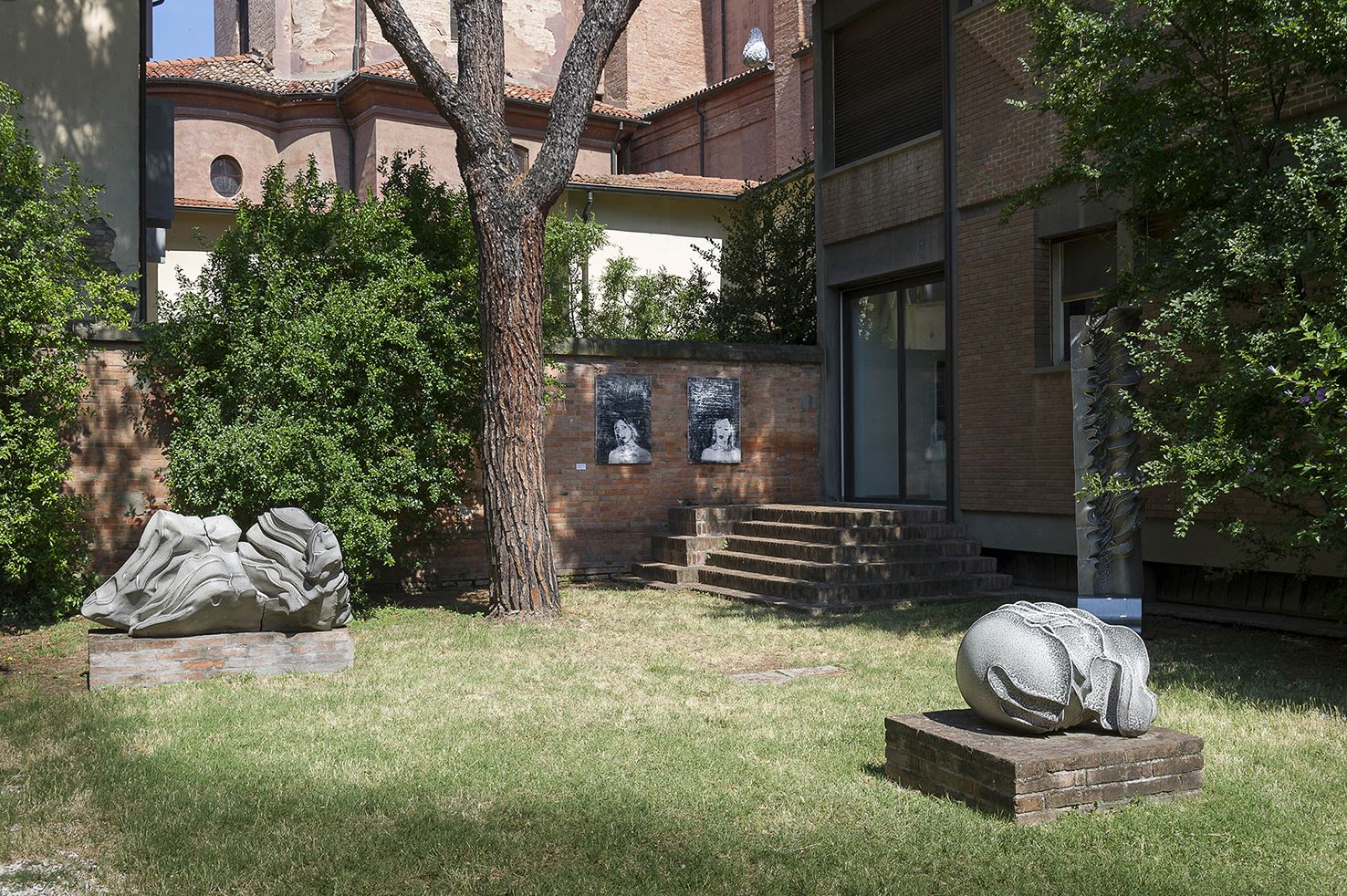
The Carlo Zauli Museum in Faenza has been promoting contemporary art through ceramics since 2002.
Zauli, an internationally renowned ceramist, had his studio here and the museum now houses the collection dedicated to the sculptor.
Inside, the exhibition is divided into sections that highlight the Faenza artist’s talent for experimentation and the constant reinterpretation of his expressive language: from the more “ceramist” Zauli of the early 1950s, with his archaic and primitivist objects, to the most recent sculptural research of the late 1980s.
Alongside the works of the many artists who have worked in the museum’s workshops.
Verzocchi Collection | Palazzo Romagnoli, Forlì
The Verzocchi Collection in Forlì, housed in the rooms of Palazzo Romagnoli, is an important testimony to Italian art of the mid-twentieth century.
Giuseppe Verzocchi was a businessman who, between 1949 and 1950, asked more than seventy contemporary Italian painters to submit a work of a fixed size (70/100) on the theme of work and a self-portrait, for 100,000 lire per painting, together with the promise of a public exhibition.
In addition, a letter with an explanation of the choice of subject and the insertion of a brick with the initials ‘V & D’, the trademark of Verzocchi’s company, which had already been the source of the art catalogue ‘Veni VD Vici’.
This extraordinary collection, now owned by the Municipality of Forlì and open to the public, includes names such as Depero, Giorgio De Chirico, Renato Guttuso, Felice Casorati, Carlo Carrà, Emilio Vedova and Filippo De Pisis.
Tito Balestra Foundation | Castello Malatestiano di Longiano (FC)
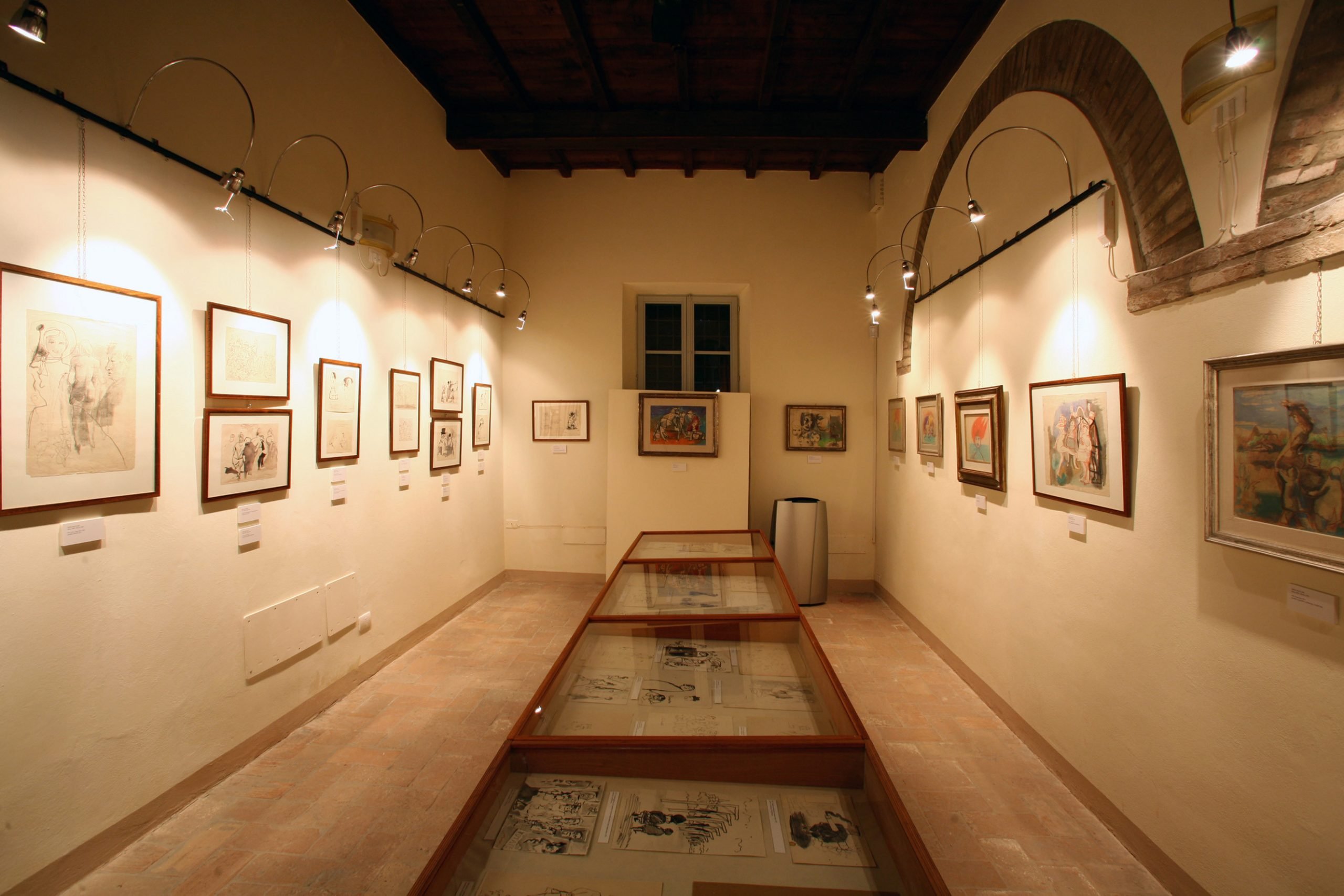
The Fondazione Tito Balestra is located in the rooms of the Malatesta Castle in Longiano, in the hills of Cesena. The poet’s original collection includes more than two thousand works by Italian and foreign artists, plus about nine hundred pieces donated by friends and family.
On display are some of the greatest artists of the Italian 20th century (from Mafai to Rosai, from De Pisis to Sironi, through Guttuso, Morandi, Vespignani, Zancanaro) and of the international panorama (Chagall, Goya, Kokoschka, Matisse, Twombly, among others).
There is also a particularly large number of works by Mino Maccari, a close friend of the poet (he was the best man at his wedding) and an important figure in Italian painting in the second half of the 20th century. His 1903 works, including oils and graphics, testify to the Tuscan artist’s activity from 1920 to 1976 and almost constitute a museum in their own right.
Buonadrata Gallery | Rimini
In Rimini, the Buonadrata Gallery is an evocative exhibition itinerary set up in Palazzo Buonadrata, the headquarters of the Fondazione Cassa di Risparmio di Rimini, which offers the public over 75 previously unvalued works owned by the Foundation.
These include authentic jewels, such as works by Marco Palmezzano da Forlì and Barnardino Zaganelli da Cotignola, the best of 16th century Romagna, and two paintings by Cagnacci. We come to the present day, with twentieth-century works by Elio Morri and contemporary ones by the famous street artist Eron.
Author
You may also like
Discovering Guercino: the must-see works in Emilia-Romagna
by Maria Grazia Masotti /// January 8, 2024
Contemporary Art in Emilia-Romagna
by Elisa Mazzini /// September 4, 2018
Italian greatest artists: 9 artworks in Emilia-Romagna
by Celestina Paglia /// February 12, 2021

Interested in our newsletter?
Every first of the month, an email (in Italian) with selected contents and upcoming events.
Sunday at the Museum: Free Museums in Emilia-Romagna
by Celestina Paglia /// March 29, 2022
Open air gallery: the Santa Sofia Sculpture Park
by Davide Marino /// October 30, 2020
